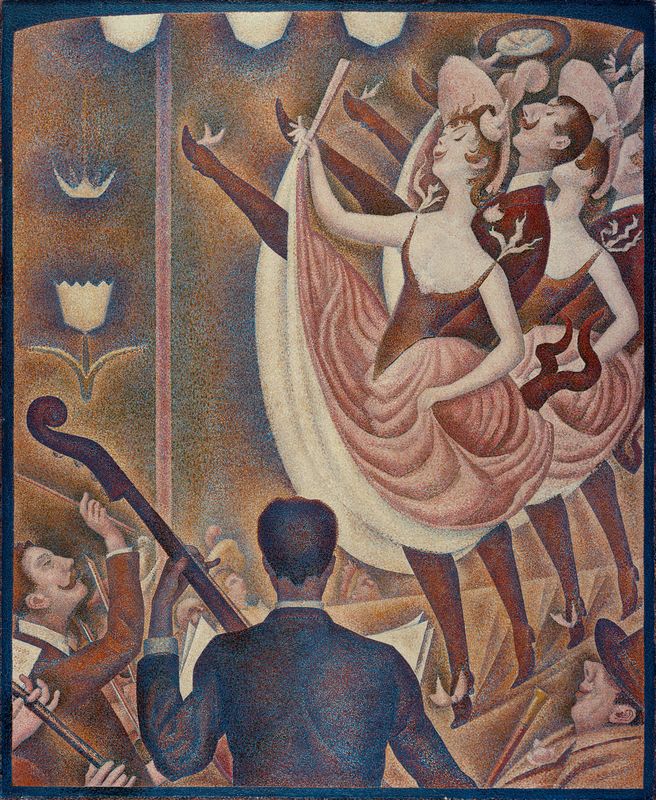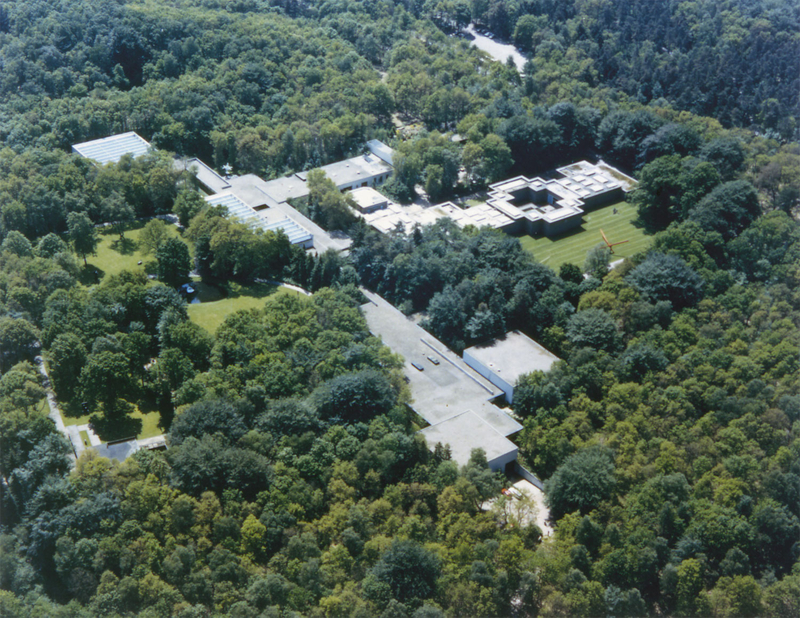History: creation of the collection

Between around 1907 and 1939, Helene Kröller-Müller amassed an impressive collection for her ‘museum house’. In addition to an exceptionally large number of paintings and drawings by Vincent van Gogh, Helene also acquired later abstract art and works by other classic modern masters. The collection includes many works with an iconic status, which attract museum visitors from all over the world, such Terrace of a Café at Night, Bridge at Arles and The Potato Eaters by Van Gogh, Le Chahut by Seurat and Soldiers Playing Cards by Léger. The later collections of minimal art, conceptual art, land art and arte povera, assembled by the directors that followed Helene, also include iconic works.
The museum is surrounded by a 25-hectare sculpture garden, with some 160 sculptures and installations. With both of the ‘Sonsbeek Pavilions’, by Gerrit Rietveld and Aldo van Eyck in the sculpture garden, the Kröller-Müller constitutes a unique ensemble of art, architecture and nature.
The present: lack of space for the post-war collection
The original collection of Helene Kröller-Müller is still displayed in the old building of the current museum, designed by Henry van de Velde and opened in 1938: a building with pleasing proportions, soft overhead lighting and a certain intimacy. In the 1970s, the museum was extended with a new wing by architect Wim Quist. In contrast to the Van de Velde building, the extensive use of glass makes this new building transparent with maximum interaction between inside and outside: the nature remains constantly visible.
Quist's expansion made it possible to exhibit the major acquisitions in minimal and conceptual art, land art and arte povera, as 'successors' to the original collection, in order to make the consistent line in the collection visible to the public.
Today, the museum has been overtaken by a new reality: it pursues an active and ambitious exhibition policy, but lacks a separate exhibition space. Exhibitions must therefore be held in the 'Quist wing'. This means that the collection assembled after Helene Kröller-Müller can no longer be displayed and the story of the museum as a whole is no longer being told. Much of the valuable collection remains in storage due to lack of space.
As a result, the museum has fallen out of step with other international institutions against which it has measured itself in terms of quality from the outset. From Fondation Beyeler in Basel to the Tate Modern in London, from Centre Pompidou in Paris to The Clark in Williamstown or Louisiana Museum of Modern Art in Humlebaek; everywhere, the basis of the collection is on permanent display and forms the main attraction for the public.
Facilities no longer meet modern requirements
The public and the expectations regarding a museum visit have changed in recent years. Visitors have become more demanding, both in terms of the exhibitions on display and the services provided, such as the catering and museum shop. The current facilities are too small and of insufficient quality. On this front, the museum cannot compete with the large, extensively renovated museums in the Netherlands.
Insufficient space for group visits
Particularly in recent years, the museum has developed into a fully-fledged player among the most important tourist destinations in the Netherlands, which has greatly improved its position among tour operators and tourism partners. Furthermore, interest in the Kröller-Müller has always been very high among schools throughout the Netherlands and beyond.
However, the museum does not have rooms to receive groups. Moreover, the museum space is too small to accommodate several groups at the same time. For this reason, visits by schools and other groups are detrimental to the experience of other museum visitors.

The future: desire for expansion
The Kröller-Müller Museum strives to maintain and preferably improve its international standing and its place among the world’s leading museums. The museum aims to expand the building in order to display the collection acquired since the Second World War and to have full-sized spaces for temporary exhibitions at its disposal. The Kröller-Müller Museum seeks to give its visitors a unique experience with high-quality public facilities, partly thanks to its exceptional location in the heart of nature.
Tadao Ando
Tadao Ando (Osaka 1941) possesses a great ability to harmonize his architecture with the existing environment and landscape. His sober use of materials and meticulous detailing are entirely consistent with the existing architecture of Henry van de Velde and Wim Quist. The view of both buildings remains fully intact, as does their functionality. Partly on account of the Kröller-Müller’s location in a nature reserve, the extension will largely be realized underground. Ando's buildings, even when situated underground, always connect with their surroundings through openings and the entry of light. Ando also has a great affinity with (modern) art and many years of experience with museum architecture in many places around the world. His buildings are in themselves worth a visit for an (inter)national audience. The extension will therefore contribute to the distinctiveness, positioning and appreciation of the Kröller-Müller Museum as one of the indisputably iconic international museums.
The design team
The design will be further developed by MVSA Architects, in close collaboration with Tadao Ando Architect & Associates. Van Rossum Raadgevende Ingenieurs has been chosen as the structural engineer, Valstar Simonis will design the technical installations and DGMR will provide consultancy services for building physics, fire safety, acoustics and sustainability. ToornendPartners is handling the project management together with the museum.
Planning
Construction of the extension is expected to start in 2027. The museum hopes to complete construction in 2030/2031. The museum's collection and sculpture garden will remain accessible during the construction period.
Tadao Ando: ‘I wish to create a cloud-like architecture that lightly covers the site. In paintings, clouds are often portrayed as an element to connect the earth and the heavenly world. I believe that this cloud-like architecture will unite the everyday world and the paradise of art and nature.’
